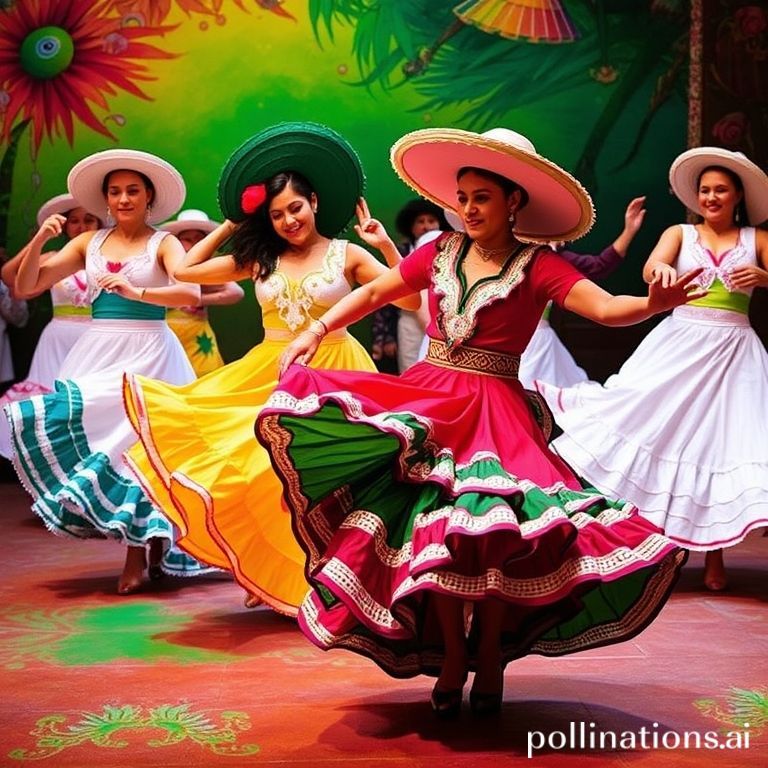Mexico’s rich cultural tapestry is vibrantly woven with music, traditions, and, most notably, dance. From lively street celebrations to elaborate theatrical performances, dance in Mexico is more than just movement; it’s storytelling, history, and the soul of its people expressed through rhythm and motion. Each region boasts unique dances, reflecting its history, indigenous roots, and Spanish colonial influences.
Embarking on a journey through traditional Mexican dances is like taking a step back in time, experiencing the passion, struggles, and triumphs of a nation. This guide explores some of the most iconic and captivating dances, providing insight into their origins, costumes, and cultural significance. So, put on your dancing shoes and let’s explore the world of Mexican dance!
Jarabe Tapatío: The National Dance of Mexico
The Jarabe Tapatío, often referred to as the “Mexican Hat Dance,” is perhaps the most recognized and celebrated dance in Mexico. Originating from Guadalajara, Jalisco, it is considered the national dance of Mexico, embodying the country’s spirit and identity. The dance is a courtship ritual, depicting the wooing of a woman by a man.
Symbolism and Story
- The dance tells a story of love, rejection, and eventual acceptance.
- The female dancer initially rejects the male’s advances, but ultimately succumbs to his charm and persistence.
- The iconic sombrero plays a crucial role in the dance, with the woman eventually accepting it from the man, symbolizing her acceptance of his love.
The Charro and China Poblana
The costumes are as iconic as the dance itself. The male dancer, the “Charro,” wears a traditional suit of a Mexican cowboy, complete with ornate embroidery, a sombrero, and boots. The female dancer, the “China Poblana,” is adorned in a vibrant and colorful dress, embellished with sequins and intricate designs. The China Poblana dress is said to be inspired by a woman from Puebla, who was known for her unique and beautiful attire.
Danza de los Viejitos: The Dance of the Little Old Men
Originating from Michoacán, the Danza de los Viejitos (Dance of the Little Old Men) is a humorous and energetic performance that belies its name. Performed by men dressed as elderly men, the dance is a celebration of life, vitality, and the enduring spirit of the indigenous people.
Masks and Mischief
The dancers wear masks depicting the faces of old men, complete with wrinkled skin and white hair. Despite their aged appearance, the dancers perform with surprising agility and energy, stomping their feet and moving with impressive speed. The dance is full of playful antics and comical gestures, captivating audiences with its unexpected vitality.
Spiritual Roots
The Danza de los Viejitos has deep roots in the pre-Hispanic era, originally performed as a ritual to honor the old god of fire, Huehuetéotl. Over time, the dance evolved into a celebration of the elderly and a tribute to the wisdom and experience that comes with age.
La Bamba: Veracruz’s Rhythmic Celebration
La Bamba, originating from Veracruz, is a lively and festive dance that showcases the region’s rich musical heritage. The dance is known for its intricate footwork and the tying of a ribbon into a bow using only the dancers’ feet, symbolizing the union of two people.
Music and Movement
The music of La Bamba is characterized by its upbeat tempo and infectious rhythm, typically played on harps, guitars, and jaranas. The dancers’ movements are fluid and graceful, reflecting the coastal influence of Veracruz. The tying of the ribbon requires skill and coordination, adding a visual spectacle to the performance.
A Wedding Tradition
La Bamba is often performed at weddings in Veracruz, symbolizing the bond between the bride and groom. The successful tying of the ribbon represents the couple’s commitment to each other and their ability to overcome challenges together.
Other Notable Mexican Dances
While the Jarabe Tapatío, Danza de los Viejitos, and La Bamba are among the most well-known, Mexico boasts a diverse array of other captivating dances, each with its own unique history and significance. Here are a few more examples:
- Danza del Venado (Deer Dance): A Yaqui dance from Sonora, depicting a deer hunt, showcasing the relationship between humans and nature.
- Danza de los Quetzales: A colorful dance from Puebla and Veracruz, featuring dancers adorned with elaborate feathered headdresses, representing the quetzal bird, a symbol of freedom and beauty.
- Danza de los Concheros: A dance with Aztec origins, performed to honor the gods and ancestors, often seen during religious festivals and ceremonies.
Conclusion
Traditional Mexican dances are a vibrant expression of the nation’s rich cultural heritage. From the iconic Jarabe Tapatío to the playful Danza de los Viejitos and the rhythmic La Bamba, each dance tells a story, celebrates a tradition, and embodies the spirit of the Mexican people. Exploring these dances is a journey through time, offering a glimpse into the history, beliefs, and values that have shaped Mexico’s unique identity. So, next time you have the opportunity to witness a traditional Mexican dance performance, immerse yourself in the music, the costumes, and the stories they tell – you’ll be captivated by the beauty and passion of Mexican culture.
Intrigued by Mexican culture? Share this article with your friends and family and let them discover the beauty of traditional Mexican dances!
IMAGE: A vibrant and dynamic photograph capturing a performance of the Jarabe Tapatío. The male dancer (Charro) is in a dark, elaborately embroidered suit and sombrero, kneeling with a flourish. The female dancer (China Poblana) wears a brightly colored, sequined dress, gracefully bending towards him. The background is a blur of warm colors, suggesting a festive celebration in Guadalajara. The lighting is dramatic, highlighting the details of the costumes and the emotion of the dance. The overall mood is joyful and celebratory. Style: High-quality, professional photography.


